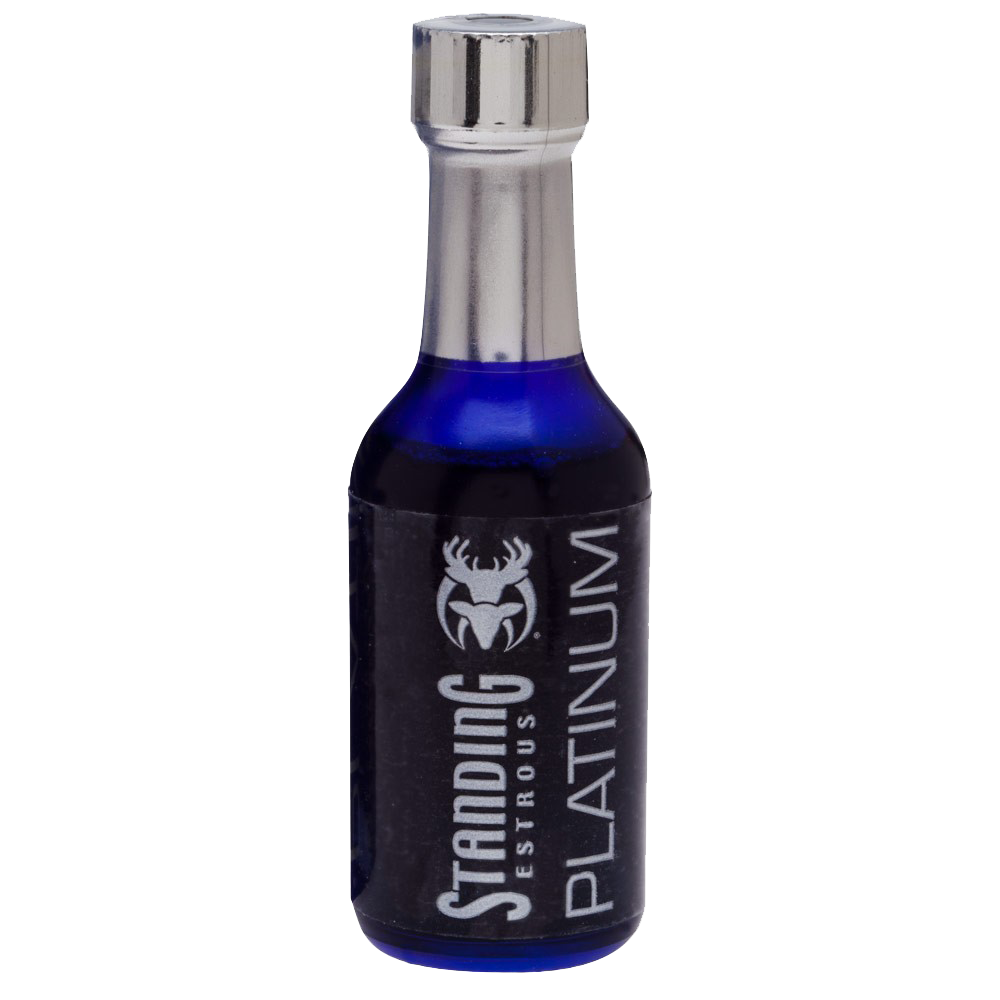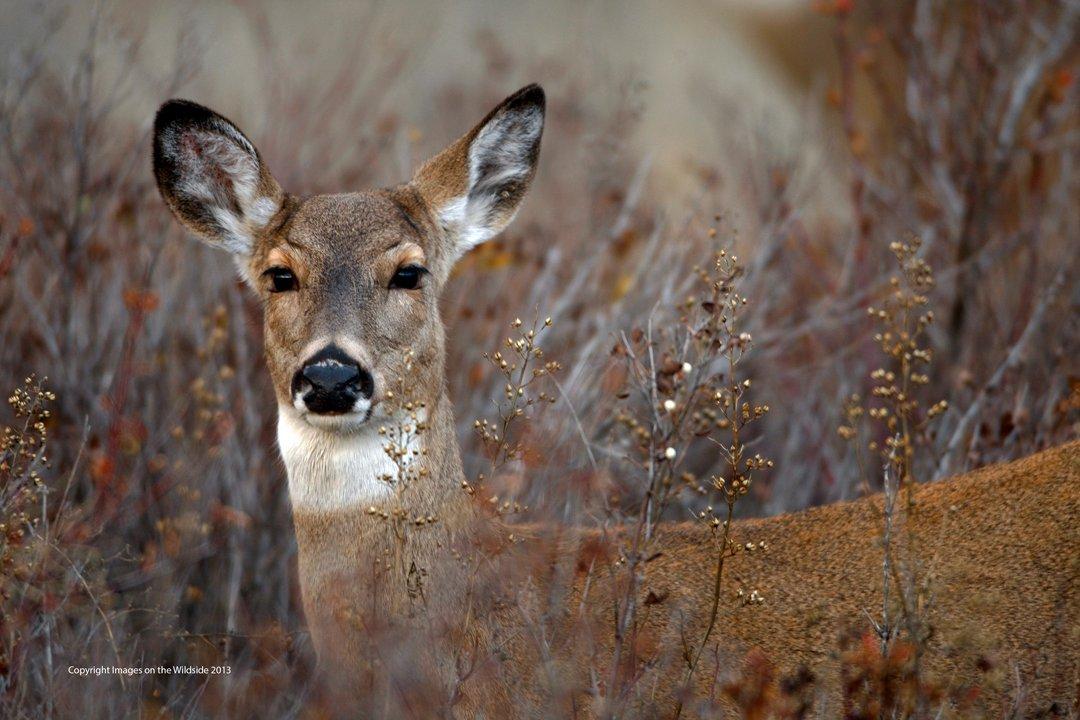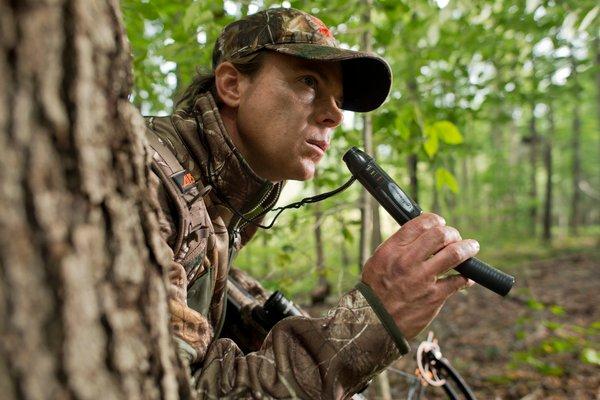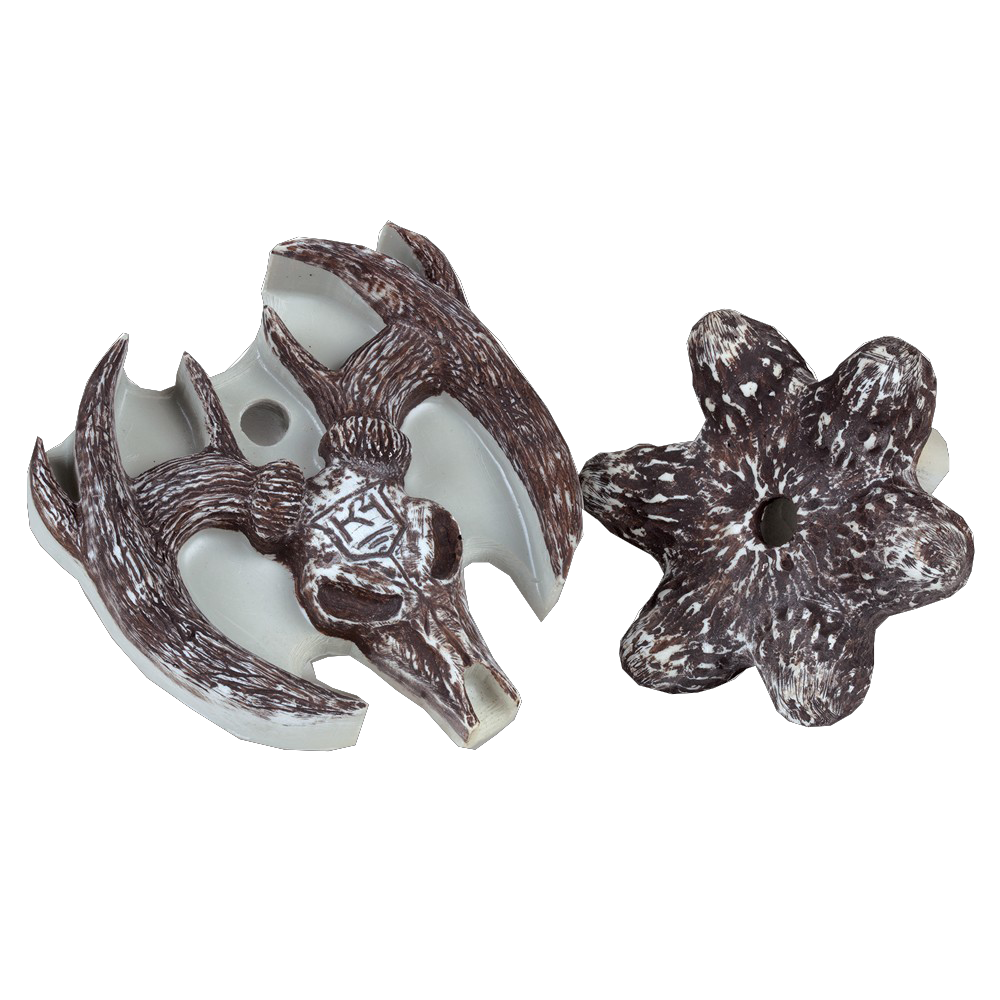Research Reveals What You May Not Know About a Buck's Senses
The 10-pointer, thick as beef and rack glinting in the late-day sun, stepped out of the greenbrier, took a quick look around, lowered his head and began sneaking my way. I put tension on the bowstring. In less than 45 seconds the buck's route would take him through a shallow funnel less than 20 steps from my perch.
Twenty seconds later he stopped, snapped his head up, and wheeled back into the thicket with astonishing speed and agility. I hadn't moved. Hadn't made a sound. And the evening breeze was perfect. But the buck was gone, and once again I was left to wonder went wrong, and to marvel at the uncanny senses of a mature whitetail buck.
If I've learned one thing in 30 years of whitetail hunting across North America, it's this: If you want to shoot big deer consistently, especially with a bow, you need to learn all you can about how a buck sees, hears and smells, and then you need to devise ways to try and negate those awesome senses. Read on.
Deer Can See Better than You … In Some Ways
Dr. Karl Miller and cohorts at the University of Georgia have studied the whitetail's vision intensively. The researchers have looked into the eyes of does and bucks with optical instruments, and even fitted deer with contact lenses. They've found four interesting things:
- Deer see about five times better than we do, and appear to be far-sighted.
- They see shades of yellow and blue, but have trouble seeing reds or greens.
- A deer's eyes can detect even the slightest hint of movement.
- To get a 3D look at a strange but stationary object that might present danger, a deer has to see it from several angles. That's why alert deer shift their heads from side to side and bob them up and down so often.
Kill the blue, kill anything shiny, and make sure movement is minimized, Miller says. It doesn't matter that you're sitting out in the open as long as you're not moving.
So let's say you're still-hunting and a grown doe sees you coming. Rather than bolting right away, she stares at you and starts the head-ducking and bobbing. You freeze. When she stops and appears to have calmed down, keep still! She will try to fake you out a few times…head bobbing and stopping…bobbing and stopping. She might even look off to the side or away from you, only to snap back around and catch you moving. Old does, especially, are crafty. An efficient predator is wise to that.
Deer Have a Wide Field of View
Biologists say the whitetail possesses a peripheral vision range somewhere between 250 to 270 degrees, which helps a buck scan the woods and pick up predator movement at or just below the horizon. Deer are less adept at picking up movement above the horizon, so you can supposedly get away with more movement in a tree stand than on the ground. But you can't be careless.
I can tell you from experience that when a deer is 100 yards out and coming straight to your stand, you'd better sit still. Remember both that wide field of view and their ability to pick up the slightest flicker of movement. Shift and move only when the deer's head and eyes go behind cover.
Sometimes when I'm bowhunting, if the woods are pretty open, I let a buck walk in super tight below my stand before moving.
This is nerve-racking! But a deer usually will not crane its head way back and look straight up, unless you bang the stand with your boot or do some other foolish thing.
They Can Hear What You Hear
University of Georgia scientists put does and bucks in sound chambers and monitored their brainwaves to see how the animals responded to different sounds and frequencies. They found that deer do not hear much better than we do.
The frequency of sound is measured in hertz. Studies have found that a healthy human can hear from 20 to 20,000 hertz, with our best and most sensitive range from 2,000 to 5,000 hertz. The researchers found that deer hear best at moderate frequencies of 3,000 to 8,000 hertz. To put perspective on it, both our normal speech and most deer vocalizations fall within these frequency ranges. So while deer generally vocalize at lower frequencies than we talk, they hear similarly.
There's one big difference: Deer can detect ultra-high-frequency sounds that we cannot.
How deer use their ears makes us think that they can hear a lot better than we can. Deer ears are like tiny satellite dishes that tip back and forth and roll around to pick up, sort out and lock onto various sounds in the woods. Think about this, because you've probably been there.
A buck is within 100 yards and hears you bang your bow or gun, or scrape your boots on a metal platform; you watch him work his ears, look your way and start stamping his foot. Wow, those ears are amazing and almost supernatural, you think. But that the animal is simply reacting to a strange and potentially dangerous sound in his environment, in much the same way that we jump and look if we hear a sudden horn or a car backfire nearby.
If you hike into a spot clanging a chain or clinking a strap buckle against a treestand, you might as well blare some Van Halen. Those heavy-metal sounds will either spook deer outright, or at least cause them to roll their ears, go on red alert and stare your way. A buck's ears are not that hard to beat. Just use common sense and be as quiet as you can.
Combat the Senses
Eyesight
This is an easy one to battle: Wear the best camo going. With 12 warm, natural colors and a proprietary printing process, Realtree Xtra allows you to blend in and avoid those pesky prying eyes. If you're looking for added concealment that's fast and easy to deploy, check out the UnderArmour Speed Freak blind made by Ameristep. It features UA scent control, leafy edges and super-fast setup.
Hearing
There are two ways to defeat a deer's ears: Be silent. Or be loud.
For silence, you'll want to employ quiet camo. And Bass Pro Shops' Redhead line offers an array of soft, quiet fleece outerwear that will do the job without breaking your budget - especially right now. Bass Pro has a ton of its Tech series on clearance and you get free shipping.
If you're just not the type to stay quiet, you'll want to make deer noises. And this is best done with a good deer call. There are few deer sounds louder than those of rattling antlers. Natural shed antlers are great, but bulky. To save space and still raise an authentic ruckus, check out Da' Bonehead Rattle Call from Knight and Hale. It looks cool, sounds great and takes up little room in your pack.
Smell

Being as scent-free as possible is always a wise choice. ScentBlocker's Trinity Blast can help. It's easy to use, fairly inexpensive and always at the ready.
If you want to add some aromatic charm to your hunts, Code Blue has the pee for you. From bucks to estrous does, Code Blue has a full line of stinky potions that just might work olfactory wonders for you this fall.
They Can Smell You from a Half-Mile
Researchers at Mississippi State University found that a deer's sense of smell, like a dog's, can be anywhere from 500 to 1,000 times more acute than a human's. Furthermore, scientists say that whitetails have thousands of sensitive receptors in their nostrils, which they use to sort out up to six smells at one time.
For more than 50 years Leonard Lee Rue III has observed, researched, photographed and written about deer. He has done more to educate the American public and hunters on the ways of the whitetail than anyone.
Rue observes that a day with high humidity (between 50 and 70 percent), temperature between 50 and 70 and with a light breeze makes for ideal scenting conditions for a buck.
Under such conditions I believe a deer could detect a human's scent from at least one-half mile, or more, he says.
How do you defeat the whitetail's awesome nose? You can't. You can only stay in the game by playing the wind and practicing good scent control on every hunt.
You ought to spend as much time as possible on your hunting property year-round, working on the habitat, scouting and hunting. Every day you're out there, monitor the wind directions at morning, midday and afternoon. Mark the currents on a map or in a journal. Over time you'll see the common winds that accompany various weather patterns at different times of the year. That is vitally important info because the majority of the trees you pick for stands will be based on the prevailing winds in your area.
Most hunters focus on where deer will come in on the upwind side of stands. That is surely important, but it is not enough. When picking a tree, you need to determine where to put your wind, and hence your scent, so you'll alert as few deer as possible. If a mature buck circles in somewhere downwind of your stand and smells you, he might just melt away into the brush. But an ornery old doe might stand out there and blow like crazy, alerting every deer within a half-mile that she smells a rat. Either way your hunt is probably ruined.
Always try to set up and float your wind over an area that's not going to see a lot of deer traffic. For example, let your wind scent drift away from your stand and out into a pasture field, or maybe out over a deep creek that deer probably aren't going to cross. I sometimes set a stand slightly upwind of a steep hill or bluff that deer won't or can't walk up on the downwind side.
Determining the best wind for a stand definitely involves trial and error. You might look at a map or aerial and say, Okay, a southeast wind will work best there. But until you go in and sit the stand several times, you don't really know if a southeast is best or even adequate. You have to study the unique topography of an area because ridges, bluffs, draws and other terrain features can dramatically affect wind direction. You also need to observe the overall deer movement throughout an area as it relates to various common winds.
Most hunters concentrate on wind direction, but they often neglect wind speed. Big mistake. I have treestands on the tops of ridges that are perfect for high-pressure mornings with little wind. I also have sets in draws and hollows that are just right for strong northwest winds that kick up after a front blows through. I've got a great stand on the edge of a small food plot down in a bottom where, if the wind is above 5 mph or so and stays that way throughout the afternoon, I'm OK. But if I try to hunt that stand on a dead-calm evening when the wind drops to nil at dusk, the cool thermals start shifting and falling, spreading my scent all over the bottom and messing me up big time. You've got to keep all that in mind to beat a buck's super sniffer.
Scent Sprays Work
In a lab at Mississippi State University (MSU), researchers were working on ways to best collect and analyze volatile organic compounds (VOCs) from human body odor. Their goal was to use VOC detection to diagnose and monitor human diseases like diabetes. But their research led to a unique collaboration with the MSU wildlife department, which was studying and testing odor-reducing products for deer hunters.
Human scent is a complex mixture of hundreds of compounds given off by bacteria that live in our bodies and on our skin. Scent compounds also come from the human body itself when it breaks down molecules to make energy. The odors are emitted through the skin and breath. These substances — the VOCs — evaporate into the air and can spook deer when you're hunting.
Figuring out which specific ingredients of body odor spook deer is a challenge, the MSU researchers said. Each of us emits a unique scent, and that scent varies depending on what and when we eat, drink, exercise and sweat. To get a cross-section of scents, the researchers collected body odor samples from 65 people who for hours wore either an untreated T-shirt or a T-shirt treated with a spray designed to eliminate or mask a hunter's body odor.
The researchers tested four scent-eliminating sprays out of dozens on the market, though they did not identify specific brands. Based on analysis of the hundreds of VOCs emitted by the 65 people, researchers found that the sprays worked by greatly reducing the levels of 29 key compounds, either by killing bacteria, binding to the chemicals, or converting them into less volatile compounds.
Bottomline: More confirmation that odor-eliminating sprays work, and you should use one liberally on every deer hunt.
Check out Hanback's Big Deer Blog.
Don't Miss: 7 Great Camo Patterns for Deer Hunting This Season
Editor's Note: This was originally published October 7, 2014.
Are you a deer hunter thirsty for knowledge? Check out our stories, videos and hard-hitting how-to's on deer hunting.












